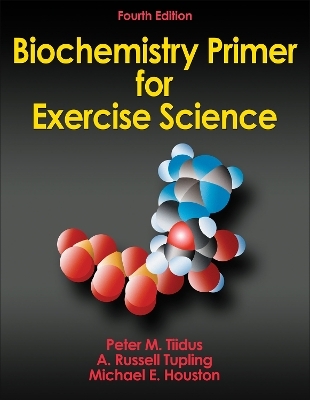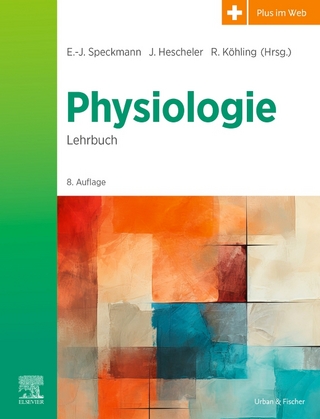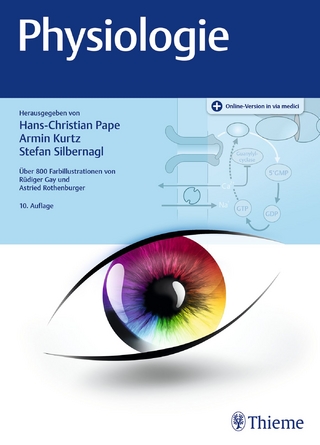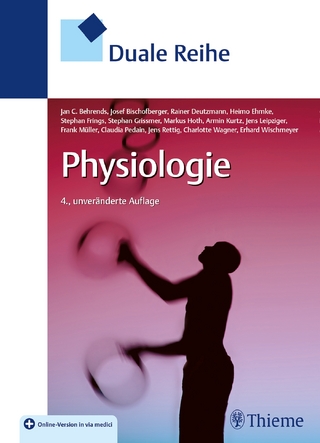
Biochemistry Primer for Exercise Science
Human Kinetics (Verlag)
978-0-7360-9605-8 (ISBN)
- Titel erscheint in neuer Auflage
- Artikel merken
Students trained in traditional exercise physiology have learned the basic concepts of energy but often don’t fully understand human energy consumption at the molecular level. Biochemistry Primer for Exercise Science, Fourth Edition, provides an introduction to biochemistry that will give readers greater insight into the molecular aspects of human physical activity.
Reflecting the rapid development of the field, this classic text continues to present the essentials of biochemistry—molecular biology, basic chemistry, metabolism, and transcription regulation—in an easy-to-understand format. The fourth edition features the most recent research in exercise biochemistry plus new and revised content, including the following:
• All-new coverage of the control of biochemistry and biochemical and muscular adaptations to exercise and training via signaling pathways, an area of study that has received much attention in recent years
• Added information on the regulation of gene expression, which highlights the need for students to comprehend the basics of molecular biology
• Next Stage sections in each chapter, which lead students toward emerging areas of knowledge in the field by examining new or controversial areas of research
• An integration of the chapters on DNA, RNA, and the regulation of protein synthesis to provide a more focused and effective presentation of these key concepts
Biochemistry Primer for Exercise Science, Fourth Edition, combines information from nutrition, physiology, and biochemistry to provide a clear explanation of the working of metabolism and the human body’s response to physical activity. Special elements throughout the text help to demystify this complex and dynamic field of study. Key points reinforce essential concepts and aid readers in relating them to sport and exercise. Chapter summaries outline important information to take away, and review questions with answers allow readers to test their knowledge of each chapter’s content. A comprehensive glossary and the list of abbreviations found on the inside front and back covers help readers become familiar with commonly used biochemistry terms, and a reference list provides a starting point for exploring areas of interest in more detail.
With its combination of essential topics, new findings, and future directions in research, Biochemistry Primer for Exercise Science, Fourth Edition, is a perfect resource for anyone looking to build an understanding of exercise biochemistry. Both students and professionals alike will find the information they need to begin their exploration of this fascinating field of study.
Peter M. Tiidus, PhD, is a professor and former chair of the department of kinesiology and physical education at Wilfrid Laurier University in Waterloo, Ontario, Canada. For more than 30 years, he has focused his research on the physiological mechanisms of and practical interventions in muscle damage and repair, employing both animal models and human subjects. Tiidus has authored more than 80 publications and presented his research in multiple lectures and conference presentations on estrogen and muscle damage, inflammation, and repair and the influence of treatment interventions on muscle recovery from damage and physiological responses. He currently serves as an editorial board member for Medicine & Science in Sports & Exercise. He is also a former member of the board of directors of the Canadian Society for Exercise Physiology. A. Russell Tupling, PhD, is an associate professor in the department of kinesiology at the University of Waterloo in Ontario, Canada. His research program, which is funded by the Natural Sciences and Engineering Research Council of Canada and the Canadian Institutes of Health Research, is dedicated to the understanding of the regulation of sarcoplasmic reticulum (SR) function in muscle and understanding how defects in the function of SR proteins that occur with oxidative stress contribute to fatigue, weakness, and disease. In 2009, he received an Early Research Award from the Government of Ontario to conduct research examining a potential link between Ca2+ pump energetics in muscle and metabolic disorders. Tupling has 49 peer-reviewed publications in scholarly journals and over 70 conference abstracts based on his research. In 2010, he won the Award of Excellence in Graduate Supervision, which was established by the University of Waterloo in recognition of exemplary faculty members who have demonstrated excellence in graduate student supervision. Tupling is a member of the American Physiological Society and the Canadian Society for Exercise Physiology (CSEP). He was invited to give the inaugural Mike Houston Tutorial Lecture in Skeletal Muscle at the CSEP conference in 2009. Michael E. Houston, PhD, received his undergraduate training in biochemistry from the University of Toronto and his PhD in biochemistry from the University of Waterloo. A superb athlete and lifelong exercise fanatic, he was able to integrate his training in biochemistry with his love of exercise sciences and to forge a career as a teacher and scientist in the field of kinesiology. For almost 40 years during his career, he authored more than 100 refereed publications and taught courses on the biochemistry of exercise to many undergraduate and graduate students. In 2003, he was presented with the Honour Award from the Canadian Society for Exercise Physiology in acknowledgment of his lifetime contribution to research and education in exercise science. Houston was the author of the first three editions of Biochemistry Primer for Exercise Science. This fourth edition, which is built on his body of work, still incorporates a major portion of his third edition. Dr. Houston passed away in 2008.
Part I: Proteins and Enzymes: The Basis of Biochemistry
Chapter 1: Amino Acids, Peptides, and Proteins
Nature of Amino Acids
Characteristics of Peptides
Structure of Proteins
Next Stage: Proteomics
Summary
Review Questions
Chapter 2: Enzymes
Enzymes as Catalysts
Rates of Enzymatic Reactions
Enzyme Cofactors
Classification of Enzymes
Protein Transporters
Oxidations and Reductions
Regulation of Enzyme Activity
Measurement of Enzyme Activity
Next Stage: Redox Regulation of the SERCA Pump in Vascular Physiology and Disease
Summary
Review Questions
Chapter 3: Gene Transcription and Protein Synthesis
DNA and RNA
Transcription
Posttranscriptional Modifications of RNA
Translation
Posttranslational Processing of Polypeptides
Protein Degradation
Regulation of Gene Expression in Exercise and Training
Next Stage: MicroRNAs and the Adaptive Response to Exercise Training
Summary
Review Questions
Part II: Metabolism: Regulation and Adaptation to Exercise and Training
Chapter 4: Energy Systems and Bioenergetics
Energy Requirements of Skeletal Muscle
Energy-Rich Phosphates
Energy Systems
Bioenergetics
Next Stage: Epigenetic Control of Skeletal Muscle Fiber Type and Metabolic Potential
Summary
Review Questions
Chapter 5: Oxidative Phosphorylation
Overview of Metabolism
Mitochondria
Citric Acid Cycle
Electron Transport Chain
Coupled Phosphorylation
Regulation of Oxidative Phosphorylation
Quantification of Redox Reactions
Oxidants and Antioxidants
Next Stage: Effects of Aging and Exercise Training on Muscle Mitochondria
Summary
Review Questions
Chapter 6: Carbohydrate and Related Metabolism
Carbohydrates
Cellular Uptake of Glucose
Phosphorylation of Glucose
Glycolysis
Glycogen Metabolism
Lactate Metabolism
Oxidation of Cytoplasmic NADH
Gluconeogenesis
Pentose Phosphate Pathway
Signaling Pathways
Next Stage: Carbohydrate, Exercise Performance, and Fatigue
Summary
Review Questions
Chapter 7: Lipid Metabolism
Types of Lipids
Fat Storage and Metabolism
Oxidation of Fatty Acids
Oxidation of Ketone Bodies
Synthesis of Fatty Acids
Fat as Fuel for Exercise
Metabolism During Exercise: Fat Versus Carbohydrate
Adipose Tissue as an Endocrine Tissue
Cholesterol
Next Stage: Exercise, 24-Hour Fat Oxidation, and Weight Loss
Summary
Review Questions
Chapter 8: Amino Acid and Protein Metabolism
Overview of Amino Acid Metabolism
Degradation of Amino Acids
Urea Cycle
Fate of Amino Acid Carbon Skeletons
Amino Acid Metabolism During Exercise
Additional Roles for Amino Acids
Next Stage: Effects of Diet and Exercise on Protein Degradation and Synthesis
Summary
Review Questions
| Verlagsort | Champaign, IL |
|---|---|
| Sprache | englisch |
| Maße | 216 x 279 mm |
| Gewicht | 862 g |
| Themenwelt | Sachbuch/Ratgeber ► Gesundheit / Leben / Psychologie |
| Sachbuch/Ratgeber ► Sport ► Fitness / Aerobic / Bodybuilding | |
| Studium ► 1. Studienabschnitt (Vorklinik) ► Physiologie | |
| ISBN-10 | 0-7360-9605-1 / 0736096051 |
| ISBN-13 | 978-0-7360-9605-8 / 9780736096058 |
| Zustand | Neuware |
| Informationen gemäß Produktsicherheitsverordnung (GPSR) | |
| Haben Sie eine Frage zum Produkt? |
aus dem Bereich



